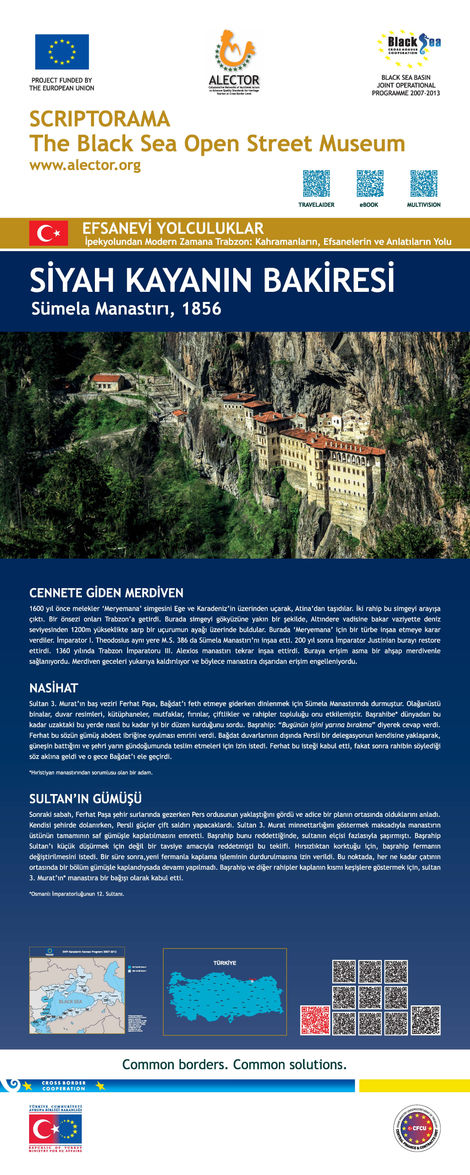Create Your First Project
Start adding your projects to your portfolio. Click on "Manage Projects" to get started
Legendary Journeys
Project Type
Heritage Trail
Date
April 2023
Location
Trabzon, Turkey
Role
Project Designer
A marvel at each place make the world class tapestry called LEGENDARY JOURNEYS with heroes, myths and narratives in Trabzon from the Silk Road to our days. 10 monuments narrate a truly Eurasian trail: Ayasofya Museum, Trabzon Museum, Bedesten Bazaar, Ataturk Pavillion, Sumela Monastery, Giresul Island, Cape Jason, Zil Castle, Memisaga Mansion. The entire Black Sea rite of passage is seen with placed as the great imperative. Starting with Mother Earth and goddess Cybelle the project moves to the first myth, the Argonautica. Then it is introduced the ancient period that includes the Skythia, Phrygia, Lucia and Persia, Egypt, the Arabic Peninsula, and China, so to connect later to the Silk Road. European history starts with the search of the Argonauts for gold and new commercial roads, the cultural economic and even mercenary explorations they have in Colchis and Svani to connect with Cape Yason. Xenophon and the Myriads at Zigana Pass, Ordu and Surmena are connected to the area of Zigana, Surmena and Macka. Giresun Island is connected to Argonauts and the Amazons and to Cybelle or Sibilla. The next epoch deals with the Romans and the discovery of cherry in Kerasous, today’s Giresun. Christian churches erected during Byzantine Period (e.g., Aghia Sophia in Trabzon and Aghios Nikolaos at Cape Yason) connect Middle Ages, the Grand Comnenoi and the advancement of the Ottoman Empire. Visitors enter the Silk Road with the domination of the Mongols, the Marco Polo adventure to connect to Zil Castle and the commercial route to the West and to the oral history of Dede Korkut. The 2nd fall of Constantinople follows in 1453 by the Ottoman Turks until the dissolving of the Ottoman Empire by Kemal Ataturk. The administrative innovation of Sultan Murad III connects to the Memis Aga Mansion in Surmena. The Russian Caucasus Campaign (1914-1918) connects to the Santa Ruins and the non-Muslim populations esp. the Greeks and the Crypto-Christians. To the Trabzon Museum and the Ataturk Pavilion have as historical background the Russian Turkish Wars, the Pontic Greeks, World War I and the liaison of the collapsing Ottoman Empire. The survival of places, artistic work and cultural masterpieces throughout the ages are called to underline the value of peace and communication among the different people, the effort to understand and learn from the mistakes of the past and co-develop in peace, mutual respect towards prosperity and welfare. The Exhibition has taken place in the gardens of Aghia Sophia in Trabzon, Turkey















































